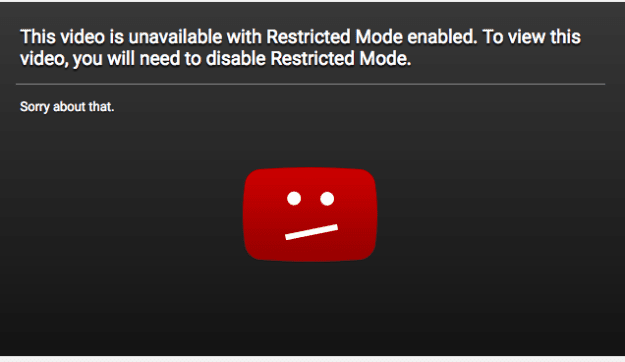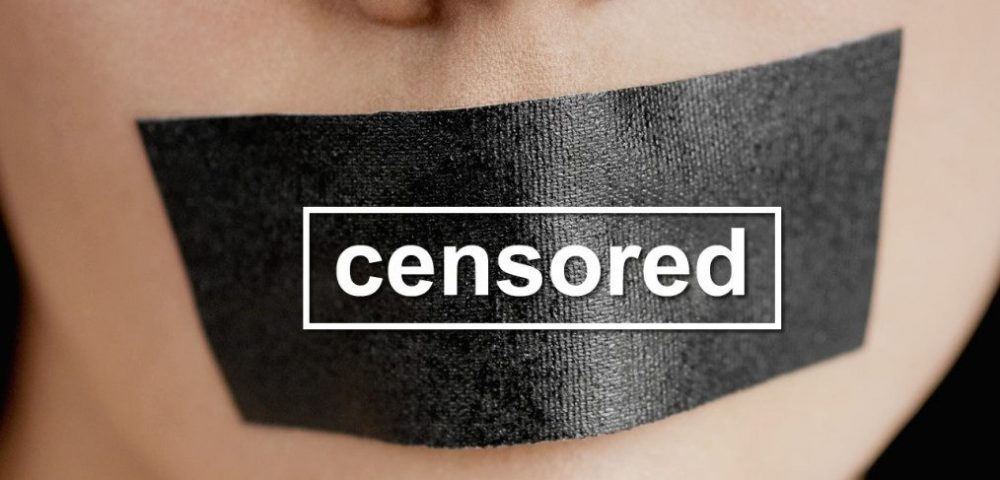Why has YouTube censored LGBTQ videos?
It’s not a good time to be LGBT. Not globally and definitely not in the U.S. where the new administration has made it clear just how anti-LGBTQ they are.
Donald Trump chose one of the country’s most anti-gay politicians, former Indiana Gov. Mike Pence as his vice president and has chosen virulently anti-LGBTQ people for his Cabinet.
Neil Gorsuch, Trump’s nominee for the U.S. Supreme Court, has a long anti-gay history and has written his objections to same-sex marriage.
Confirmation hearings for Gorsuch began March 20. Unless the Democrats choose to filibuster, Gorsuch will likely be confirmed, making him the youngest and most conservative member of the SCOTUS. A Trump imprint for the next 30 years.
Trump’s is a very different White House than the one LGBTQ people had expected from Hillary Clinton. Her campaign manager, Robby Mook, was the first openly gay person to ever run a presidential campaign. Her staff has always been half women and 40 percent people of color and she was pledged to that same balance in her Cabinet, which would have been historic.
Clinton has been engaged in LGBTQ issues since the 1980s in Arkansas and her Geneva speech in 2011 as Secretary of State on gay rights was the first by a senior official of any nation.
Trump had attempted to lure LGBTQ voters in the waning days of his campaign, but any promises he made were just that: The day of President Trump’s Inauguration, the LGBTQ pages from the White House website were scrubbed. Last month Trump revoked former President Obama’s landmark federal order that public schools must allow transgender students to use the bathrooms of their gender identity or have their funding rescinded. That change pushed the case of trans teen Gavin Grimm out of consideration by the U.S. Supreme Court.
It’s into this atmosphere of repression and censorship that LGBTQ people discover YouTube is flagging and hiding LGBTQ videos. The discovery was made March 16 by Rowan Ellis whose video about gay Disney characters should have been getting numerous hits when “Beauty and the Beast” premiered.

Except it had been hidden by a feature called “restricted mode.” According to The Guardian UK, “restricted mode is turned off by default but can be turned on to automatically filter ‘potentially inappropriate’ content.” According to Google, which owns YouTube, this is identified by “community flagging, age restrictions, and other signals.”

Restricted mode isn’t new. The flagging of LGBTQ content is. Ellis said at least 40 of her videos had been flagged – despite having pretty innocuous titles like the Disney video. Ellis’ website describes her as one of “YouTube’s U.K. ambassadors” who “runs her own YouTube channel where she “explores activism and pop culture through a feminist and queer lens.” YouTube lists her as having nearly 25,000 subscribers.
Ellis has been commissioned by “Google’s YouTube Space in London to run a ‘Women on YouTube’ workshop to facilitate collaboration and mentoring on the platform.” Ellis is currently in pre-production on a feature-length documentary about the history of LGBTQ and women’s communities in the U.K. All of which makes it clear that Rowan Ellis has a solid YouTube following.
Her videos have views in the tens of thousands and include such titles as Self Care for Activists, “Strong Female Characters” on screen, Witches in Pop Culture, an A-Z of LGBT Tropes, Feminism in Blockbusters and more. She’s far from the only one being targeted, but she is the one who raised the rainbow flag about the flagging, posting a video about it and demanding answers from YouTube.
Ellis’ video is a restrained yet passionate declaration that YouTube is very much a space where LGBTQ people – especially teens – can “have a way into community,” and her words are poignant for anyone remembering what it was like to be a lesbian or queer or trans teen. They are also alarming, pointing out why such communities – especially for teens and other young LGBTQ people – are often the only space where people feel safe and among their own.
She asserted that YouTube’s censoring of videos meant they were complicit in putting LGBTQ kids at risk from both self-harm and harassment and worse. Referencing the “cycle of ignorance” that prioritizes bathroom bills over the lives of LGBTQ teens, Ellis said, “If you really want to protect children, this is not the way to go about it.”
Her call to arms went viral and on March 19 #YouTubeIsOverParty was trending on Twitter, which caught the attention of YouTube.
Other viral LGBTQ YouTube stars like the wildly popular Tyler Oakly, who has nearly six million Twitter followers and eight million YouTube subscribers with over 600 million views, were soon discovering even they were being flagged by the same system. Oakly’s moving Black History Month video about eight black LGBTQ trailblazers who he finds inspiring was flagged.
Another gay YouTube star, Calum McSwiggan, posted a video in response to the flagging titled “This video is too gay for kids” in which he responded to the censorship. There is nothing even PG13 in that video, yet it too – along with all but one of McSwiggan’s videos – has ended up in the censored section. Those, McSwiggan details in his video, include a video of a gay wedding and pride videos.
When I went searching to see what might fall under the restricted mode, I was surprised to find nearly everything lesbian was verboten. As someone currently writing a history of lesbian erasure, this was unsettling. Why would videos of my mentor Audre Lorde be flagged? Or a video of YouTube heart throbs Tegan and Sara?
NeonFiona, another YouTuber with a half million followers discovered that videos in which she didn’t mention the gender of her female partner weren’t hidden, but those in which she referenced her girlfriend were, noting “It’s just any and all LGBT+ titles being flagged.”
Everyone who’s discovered they have been targeted by TouTube’s restricted mode and spoken out about it gets that some videos are not for young kids. YouTube “aims to filter sensitive content” with the feature, but the problem is LGBTQ seems to have gotten blanket censorship. How are videos about transgender makeup tips or a documentary about trans teens dangerous? It’s not going to turn a kid trans anymore than hearing Angela Davis talk about lesbian literary icon Audre Lorde is going to turn them lesbian or Tyler Oakly discussing Bayard Rustin, who organized Dr. Martin Luther King, Jr.’s 1963 March on Washington, is going to make kids gay.
Rather, each of these videos–as well as Ellis’ compelling video on villainous gay Disney characters and NeonFiona’s bisexual coming out–is guaranteed to make LGBTQ kids feel safer, more included, less isolated. Knowing a great civil rights leader was gay? How is that not empowering? Hearing music that’s queer-friendly? Priceless. For its part, YouTube sort of apologized, trying to explain that it was censoring mature content, but not quite explaining how that translated into LGBTQ content. YouTube posted their apology on Twitter and added on Monday that it was still working to fix the issue.

While Oakley called on LGBTQ YouTubers to check their videos and the settings, he posted a photo of himself being hugged by New Jersey Sen. Cory Booker, with whom he “spent the afternoon discussing political activism.” The message could not have been more clear.
Late Monday night, GLAAD executive director Sarah Kate Ellis (no relation to Rowan) posted a comment about the situation on Twitter and efforts at resolution. But why did this happen at all? What if Ellis hadn’t discovered this was happening to her work and alerted others? How long was this going on unremarked?
The debacle has pointed out how vulnerable LGBTQ voices are to censorship and how grave the repercussions might be for the very people YouTube is claiming to protect. For Americans in the time of Trump, this was an especially ugly moment. We need LGBTQ voices more than ever and as Ellis pointed out in her video, community is everything.
